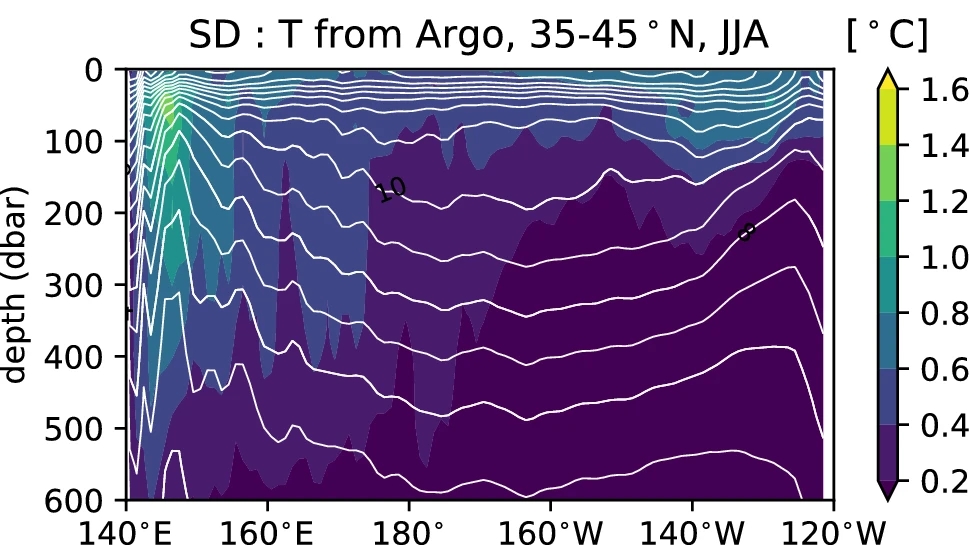Observed response of marine boundary layer cloud to the interannual variations of summertime Oyashio extension SST front
Naoya Takahashi, Tadahiro Hayasaka, Bo Qiu & Ryohei Yamaguchi
Published in CLIMATE DYNAMICS, January 2021
Active roles of both sea surface temperature (SST) and its frontal characteristics to the atmosphere in the mid-latitudes have been investigated around the western boundary current regions, and most studies have focused on winter season. The present study investigated the influence of the variation of the summertime Oyashio extension SST front (SSTF) in modulating low-level cloud properties (i.e., low-level cloud cover [LCC], cloud optical thickness [COT], and shortwave cloud radiative effect [SWCRE]) on inter-annual timescales, based on available satellite and Argo float datasets during 2003–2016. First, we examined the mechanism of summertime SSTF variability itself. The strength of the SSTF (SSSTF), defined as the maximum horizontal gradient of SST, has clear inter-annual variations. Frontogenesis equation analysis and regression analysis for subsurface temperature indicated that the inter-annual variations of the summertime SSSTF in the western North Pacific are closely related to the variations of not surface heat flux, but western boundary currents, particularly the Oyashio Extensions. The response of low-level cloud to intensified SSSTF is that negative SWCRE with positive COT anomaly in the northern flank of the SSTF can be induced by cold SST anomalies. The spatial scale of the low-level cloud response was larger than the SST frontal scale, and the spatial distribution of the response was mainly constrained by the pathways of Kuroshio and Oyashio Extensions. Multi-linear regression analysis revealed that the local SST anomaly played largest role in modulating the SWCRE and COT anomalies among the cloud controlling factors (e.g., estimated inversion strength, air-temperature advection) accounting for more than 50% of the variation. This study provides an observational evidence of the active role of local SST anomalies in summertime associated with the western boundary currents to the oceanic low-level cloud.

Fig.The standard deviation (SD) of the inter-annual variation of subsurface temperature obtained from Argo observation at latitudes of 35–45° N for June, July, and August (JJA) in 2003–2016 (colored areas, unit: °C). The climatological mean of subsurface temperature is also plotted (contours, unit: °C, CI: 1 °C)
Takahashi, N., Hayasaka, T., Qiu, B. et al. Observed response of marine boundary layer cloud to the interannual variations of summertime Oyashio extension SST front. Clim Dyn (2021). https://doi.org/10.1007/s00382-021-05649-4